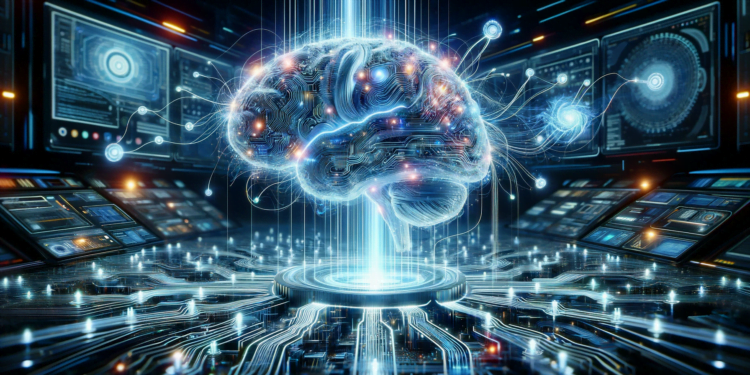Text generated by artificial intelligence (AI) programs is taking up a promising position in the contemporary technological landscape. Its impact on the publishing industry, media, and academic environment is transcending the boundaries of what was understood as the automatic generation of content. This specialized glossary offers a comprehensive and technical review of key terms and advanced concepts in AI text generation, thus providing a valuable reference for professionals and researchers in the field.
Machine Learning (ML)
It is a branch of artificial intelligence focused on developing algorithms capable of learning from data and performing tasks without being explicitly programmed to do so. In the context of text generation, machine learning uses large volumes of text to learn linguistic patterns.
Recurrent Neural Networks (RNN)
They are a class of neural networks specialized in processing data sequences, such as text, where the output at a given time is dependent on previous data. They are essential for understanding context in sentences and paragraphs.
Natural Language Processing (NLP)
An interdisciplinary field between AI and linguistics that involves creating systems capable of understanding, interpreting, and manipulating human language. Text generation is one of its applications, making it especially relevant for machine translation and virtual assistants.
Attention Models
These are components of deep learning architectures that allow models to focus on specific parts of the input when making predictions, improving the quality of the generated text by maintaining relevant context and minimizing information loss.
Transformer
It is a type of attention model architecture that discards the use of recurrence and instead utilizes attention mechanisms to weigh the relative importance of different words in a sequence. It has established a new standard in NLP tasks, such as text generation.
Generative Pre-trained Transformer (GPT)
A series of AI models developed by OpenAI that use the Transformer architecture. These models have proven to be very effective in generating coherent and relevant text, and even in creating content that appears to have been written by a human.
Fine-tuning
The practice of adapting a pre-trained model for a general task to a specific task through additional training with a smaller, specialized dataset. In text generation, this allows for outputs that adhere to particular styles or themes.
Tokenization
The process of converting text into smaller units (tokens), such as words or characters, so they can be processed by AI models. It is a crucial step in many NLP tasks, including text generation.
Embeddings
Vector representations of words or phrases in a dimensional space that capture their meaning and semantic relationship. They facilitate AI models’ ability to understand text and generate new content with coherent meaning.
Sequence-to-Sequence (Seq2Seq)
It is a framework that uses RNNs or Transformers to convert an input sequence, such as a sentence in one language, into another sequence, such as the same sentence translated into another language. This technique is also significant for automatic summarization and generating responses in dialogues.
Pre-training
The phase in which an AI model is trained on a large, general dataset to learn basic language patterns before being fine-tuned for specific tasks. This process has proven to be extremely effective in improving performance in NLP tasks.
Natural Language Generation (NLG)
It is a subdiscipline of NLP that specifically focuses on creating coherent and contextually relevant text. It combines linguistic and statistical techniques to produce texts that appear to be generated by humans.
Autoregressive Decoding
A process in which each word generated by the model is used as part of the input to generate the next word, allowing for the creation of continuous and coherent text. It is fundamental in models like GPT for writing fluid sentences and paragraphs.
Beam Search
A heuristic search algorithm that explores a graph of possible output sequences, selecting the most promising ones to extend at each step and produce high-quality text while minimizing the probability of local errors.
Ethical Challenges
AI text generation raises ethical questions regarding authorship, misinformation, and bias. It is crucial that developers and users of these systems consider these issues and establish good practices to mitigate potential harms.
Benchmarking and Evaluation Metrics
Text generation models are assessed through benchmarks that use multiple metrics, like BLEU for translation or ROUGE for summarization, to measure their effectiveness and compare them with humans or other models.
Personalization and Contextualization
The ability of AI models to tailor text generation to user needs and characteristics, as well as respond appropriately in varying contexts, is a research frontier that promises to continue refining the relevance and quality of automated communication.
This comprehensive glossary reflects the current state and recent advances in text generation through AI. As technology continues to mature, these terms and concepts will continue to evolve, and new ones will be introduced, aligned with innovative discoveries and applications. Professionals in the field must maintain continuous learning and stay alert to updates that will define the future of AI in text generation.






















